When Valve announced they would be making a controller people went a little crazy. The firm spun up their PR magic machine in ways that could make Apple blush, positioning the controller as the grand finale in a three-part product push.
The plan was to launch SteamOS on day one, release Steam Boxes on day two and finish off with the debut Steam Controller on day three. Like an alternative-universe-game-platform-holding Billy Ocean, they really wanted to get games out your monitor and into your car TV, and day three has arrived.
Not only was every gamer's favorite company making new toys, the Steam Controller itself was wildly different from its contemporaries. No analog sticks, haptic feedback, touch screen in the middle, nonstandard buttons and placement, and two very large touch pads. It wasn't pretty, but it had pizzazz. The goal was to create an input device that would allow you to play all your favorite keyboard and mouse centric games, along with standard controller supported games, comfortably on your couch. But how do you make an input device that works as well for Civilization V as it does for Counter Strike?
Fast forward a couple of years (valve time is poised to outlive Moore's law), sprinkle in some notable hardware layoffs, add a dash of an extremely limited public beta phase and a few internal redesigns, and what we've arrived at shares a lot more in common with Sony's DualShock 4 and Microsoft's Xbox One Controller than that original design.
Four standard face buttons that follow Xbox colors and layout (x, y, a, b) adorn the bottom right of the controller face, and a single depressible analog stick occupies the lower left. There is an arrangement of three buttons in the middle of the controller (select, steam orb, start), left and right bumpers, left and right triggers, and an additional left and right paddle on the back of each grip that mirror the 'A' and 'X' buttons by default.
The stars of the show are two very large, circular touch pads at the top. The touch pad in the top left is debossed with the shape of a standard d-pad cross, while the right pad is left completely smooth. Both pads are also clickable, adding two additional physical buttons.
For those keeping count that leaves us at a healthy 16 physical buttons on the controller. In software either of the pads can be configured in one of six ways: as a 4-way directional pad, as a 4 button pad (x,y,a,b on diagonals like on the face), a joystick optimized for movement or camera control, as an emulated mouse cursor, or as a scroll wheel.
By implementing two large touch pads, Valve managed to stumble on a somewhat ingenious two-controllers-in-one approach with their layout. You can use it like a standard controller with your left thumb on the analog stick, using your right thumb to trade off between face buttons and top-right pad duty, or alternatively you can 'choke up' on the controller, placing both your thumbs on the two touch pads and allowing your other fingers to rest on the shoulder buttons, triggers, and paddles on the back. This is particularly useful when switching between games written for mouse and keyboard or for standard controller input.
Unfortunately due to the amount of buttons and the size of the touch pads, trade-offs were made. The x, y, a, and b face buttons suffer the most, squished into the bottom right corner of the contoller's face at a reduced size. The controller itself also ends up being larger than either the DualShock 4 or the Xbox One Controller. I never found it uncomfortable to hold, but after a couple of hours with it I'm still hitting face buttons I didn't mean to.
What all of this adds up to is a versatile controller with a lot of room for customization. These days Valve is known for their community focused approach to delivering software as a service, and the Steam Controller is no different. They are leaning heavily on user generated controller mappings for games, making it as painless as possible to download community made control schemes or to share your own through Steam.
Hardware is only as good as the software that enables it. Apple fans should be more familiar with that doctrine than most. As of this writing, the Steam Controller is not properly supported under OS X.
To be blunt, the Steam Controller is half implemented. Keyboard and mouse emulation are functional if you opt-in to the latest Steam client beta, but gamepad emulation is non-functioning. Valve has apologized, and promises fixes within the next few weeks, but as of right now it's impossible for us to recommend this to Mac users.
What does not having gamepad emulation actually amount to? Basically it means that any games that would normally detect and use gamepads will fail to do so. Generally this will surface in a "controller not found"' or "connect controller" message of some type in the game.
However, keyboard and mouse emulation is currently working with the latest Steam beta, so if the game supports keyboard and mouse as an input, you can try and map to that. Keep in mind, however, that is going to mean remapping your controller manually in almost every game, as well as avoiding the community and developer made mappings. If you don't mind putting in a little elbow grease, you may be able to get something functional out of the experience.
Eventually I just plugged it into my Gaming PC where everything just works. Out of the handful of games I tested (Darkest Dungeon, Crypt of the Necrodancer, Bioshock Infinite, Bastion, Rocket League) I was able to find configurations or manually map ones that I felt were pretty good. I'm not sure there was an experience in that batch of games that was compelling enough to make me choose it over a keyboard and mouse or DualShock 4 or Xbox One Controller when available.
The sweet spot for this controller is undoubtedly playing a keyboard and mouse only game from your couch. Valve is making a bet that market is larger than most of us realize.
So where does that leave us? Well, there's a reason this is a first look and not a full review. I've barely touched on the software side of things, and my hands-on play time has been limited to a few hours. Add in the OS X issues and it becomes impossible to recommend this controller to Mac users right now. Don't buy this if your gaming machine is a Mac. Not yet, at least.
 Jason Snively
Jason Snively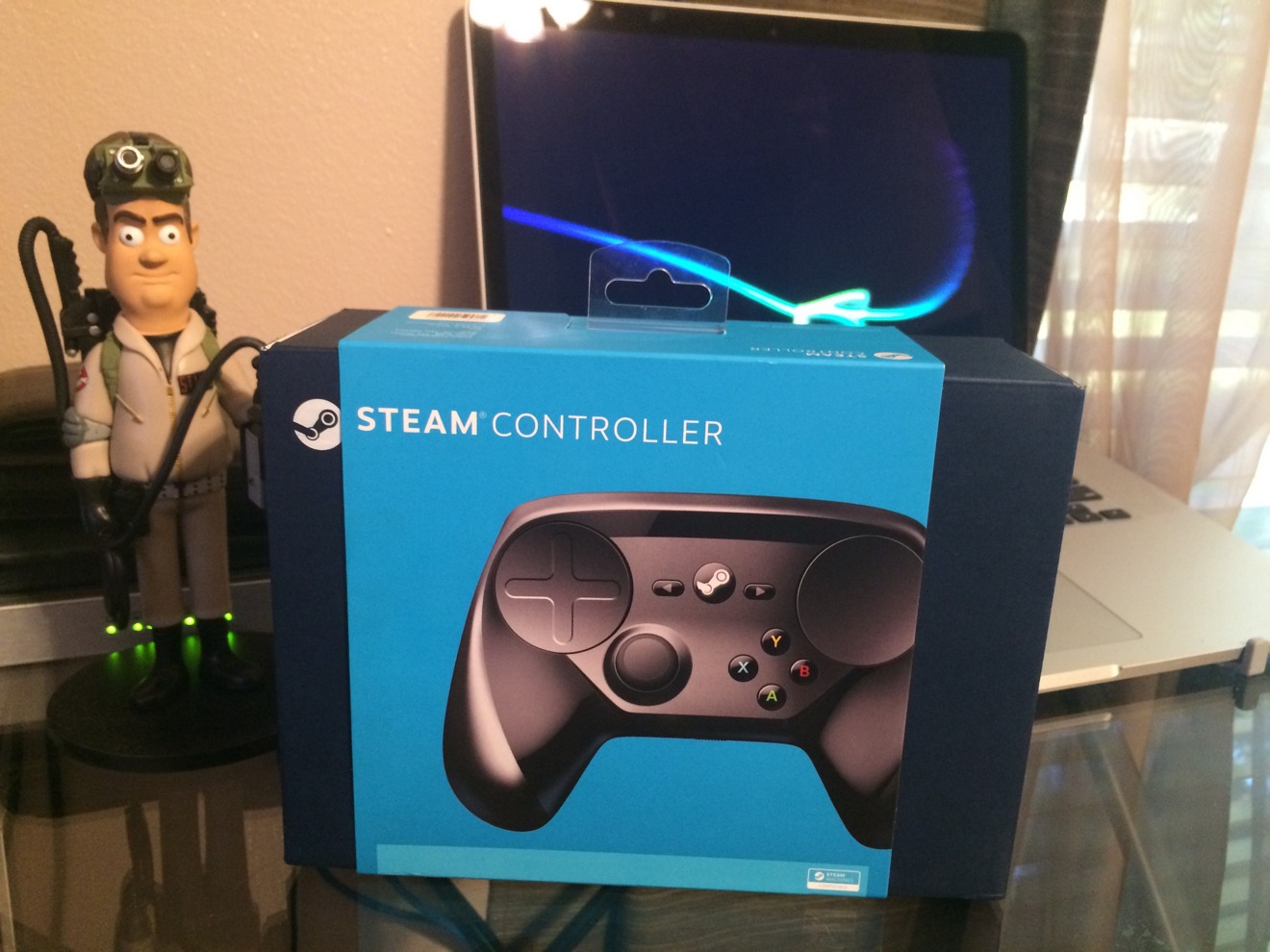
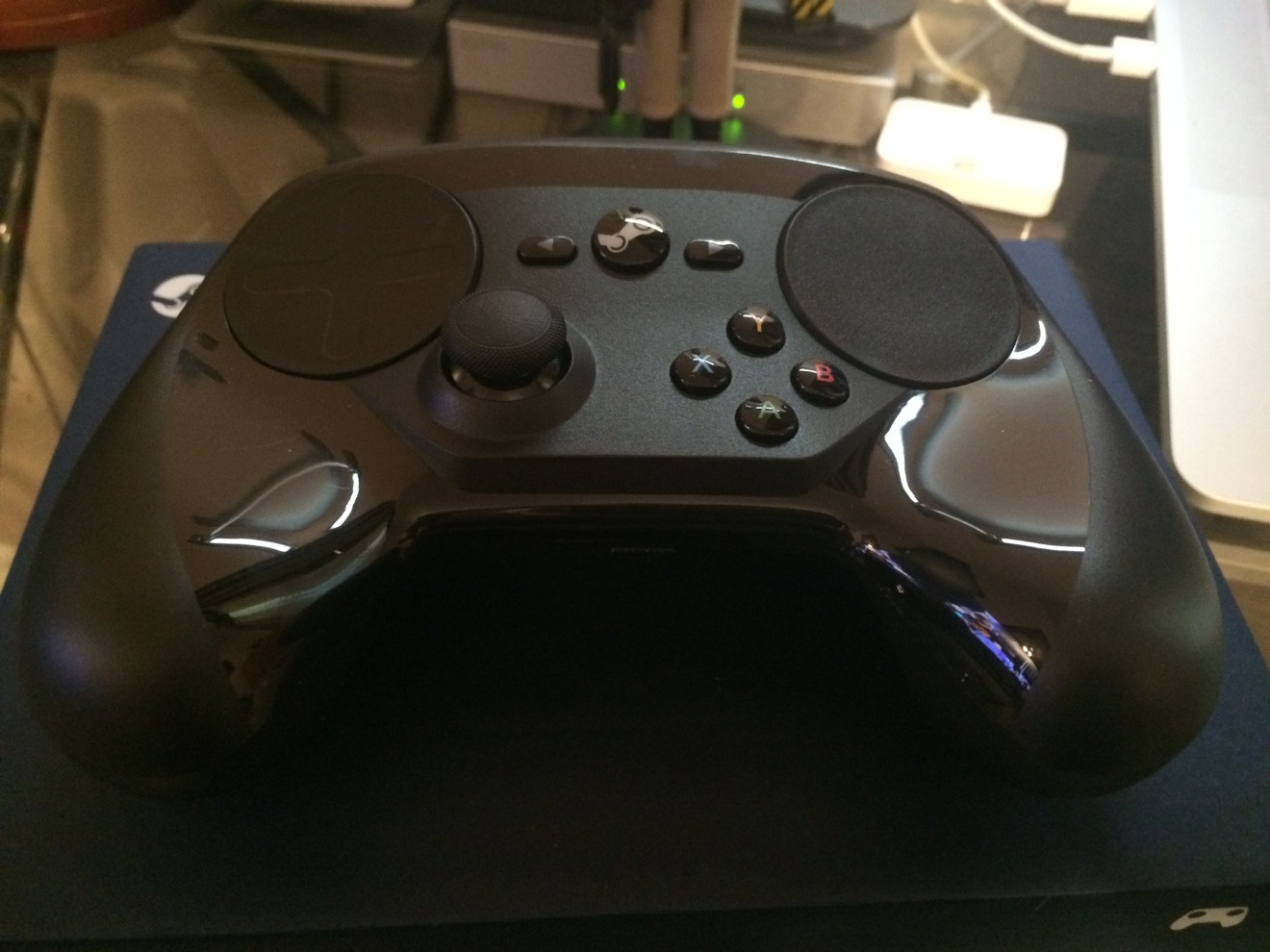
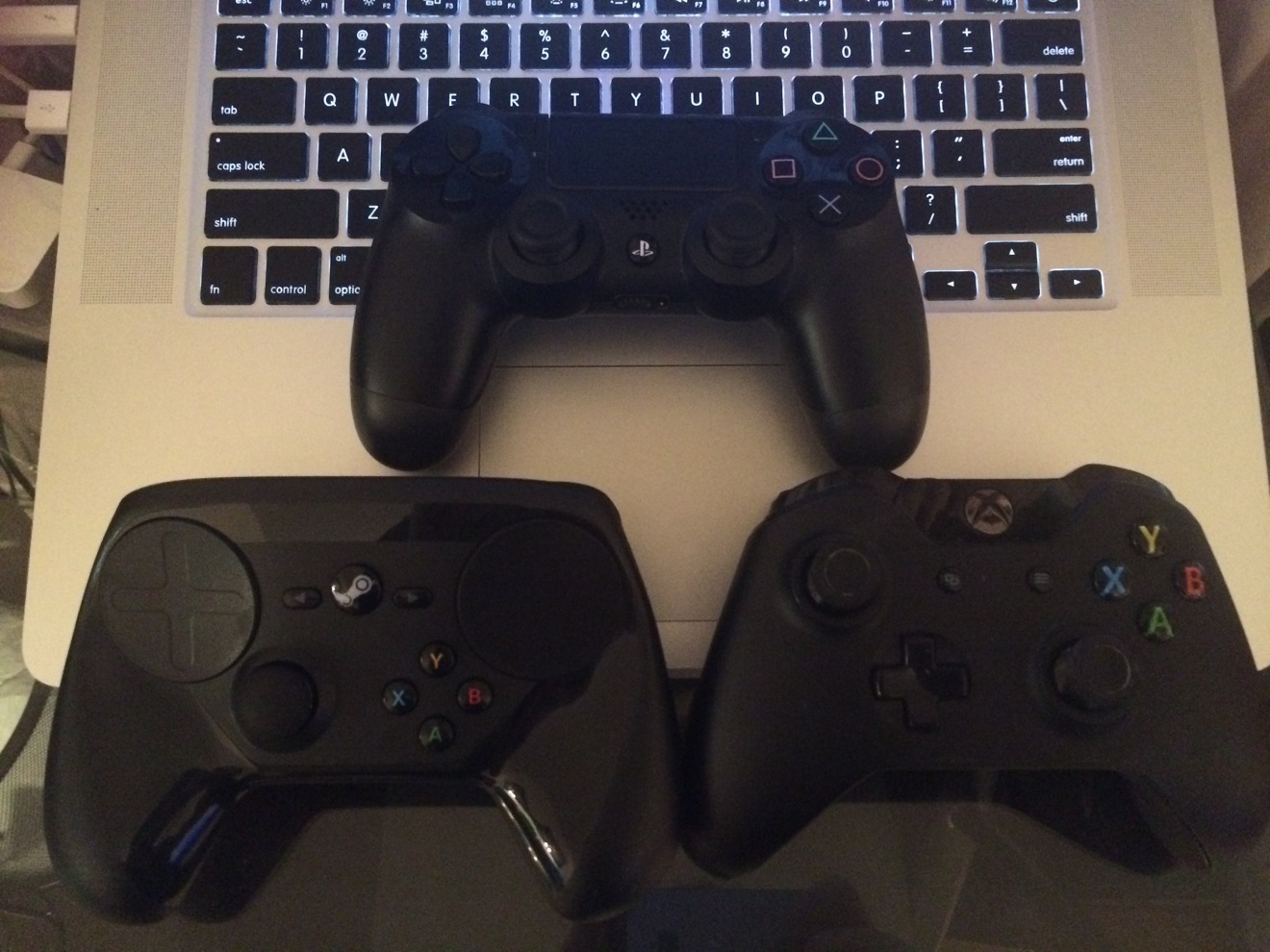
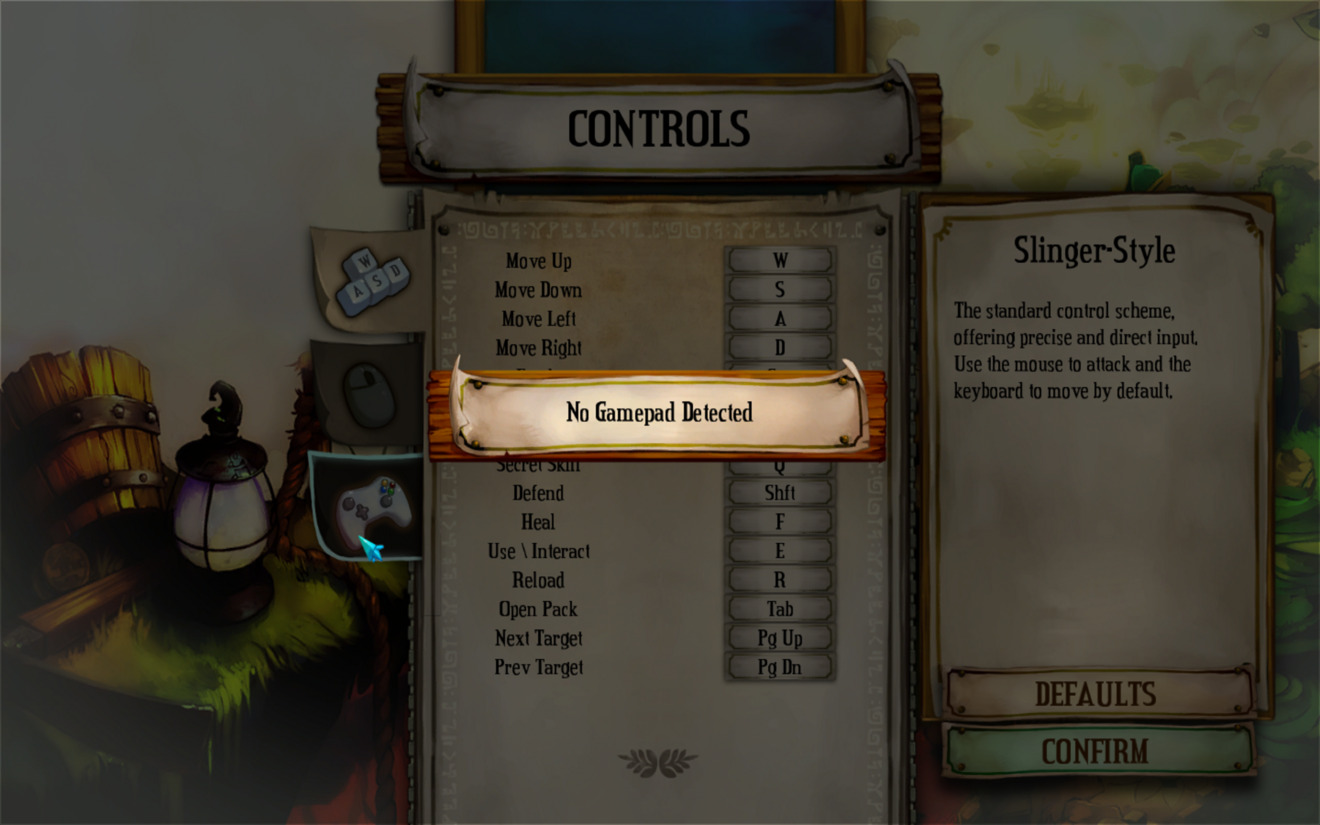
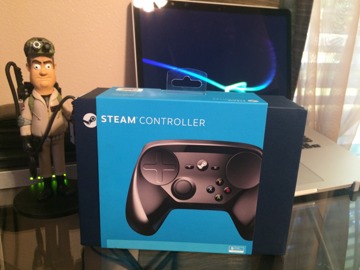
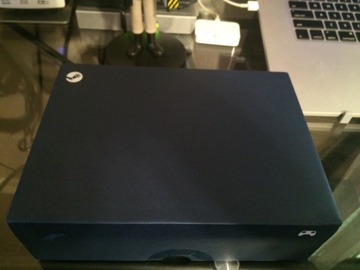
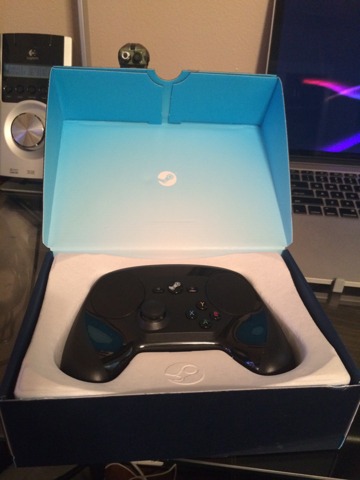
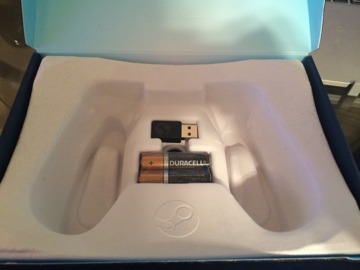


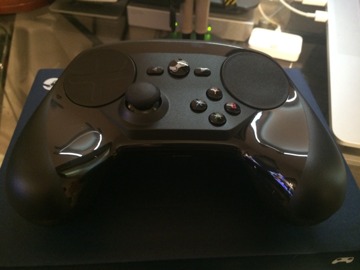
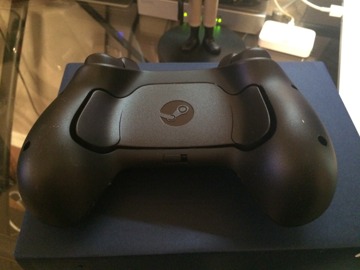
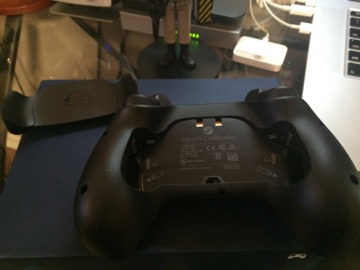
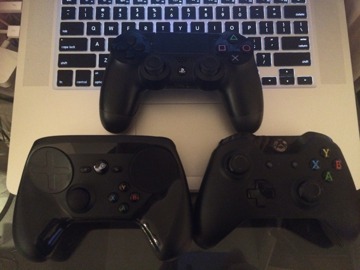







-m.jpg)






 Amber Neely
Amber Neely
 Andrew Orr
Andrew Orr

 Sponsored Content
Sponsored Content

 William Gallagher
William Gallagher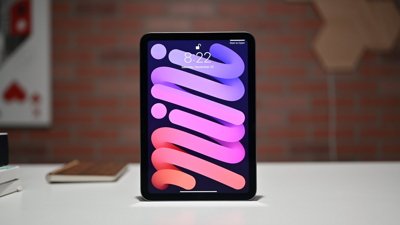
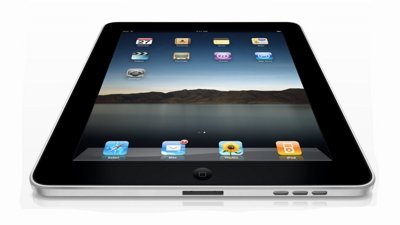









23 Comments
Stil more original than the other rip offs.
Can Apple buy Valve and get serious about games? Gabe Newell would be awesome for Apple... they don't get gaming at all. Macs are embarrassing gaming machines. We need something powerful enough to run Star Citizen and Apple to jump in and get CryEngine to use OpenGL. Gaming isn't that tough... And for goodness sake make a desktop computer without mobile graphics.
Can Apple buy Valve and get serious about games? Gabe Newell would be awesome for Apple... they don't get gaming at all. Macs are embarrassing gaming machines. We need something powerful enough to run Star Citizen and Apple to jump in and get CryEngine to use OpenGL. Gaming isn't that tough...
And for goodness sake make a desktop computer without mobile graphics.
I'd like to see a desktop step between a Mac Pro and a Mac Mini - something monitor-less out the box but probably the price of an iMac, with a dedicated desktop-class graphics card (Or 2). Gabe's pushed hard against Microsoft, but can't outright ignore them because it'd be economic suicide. They've made a huge push to Linux gaming, and with Steam Machines on the go I can only hope it's the start of some serious competition for the desktop OS of choice for gaming.
Honestly. Valve, good first try, but: - If the ABXY buttons are two far down. The best "arrangement" of these buttons was with the Nintendo GameCube's controller where the 4 buttons were different size/shapes and not contorting the thumb. By extension the PS1/2/3/4 controller is essentially a SNES controller with two analog sticks and two extra trigger buttons. - The XBOX 360 trigger buttons are the best design but worst positioned. When you use the Xbox 360, the controller is too large and thus your fingers for the triggers rests between the two buttons and when extra force is applied to ABXY buttons the top shoulder buttons are pressed when not desired to. This Valve controller has essentially reversed the buttons and analog controls on the Xbox 360 controller. Thus negating the reason for the Xbox 360 button arrangement. Basically the problem is that no gamepad is really going to fit everyone's hands, and these "touchpad" analog controls don't improve anything and puts the most-frequently used buttons in the least-usable location like in the N64 (where you can't use 1/3rd of the controller and the digital pad was the ignored 1/3rd.) Like I'd almost want to suggest that Valve would have been better off making a "reversable" controller where you just flip the controller upside down. Like look a the Wii gamepad controller and compare it to the Wii U Pro gamepad. The Wii's gamepad was essentially the SNES pad with the analog sticks in the same place as the PSX, but the second shoulder buttons are too faraway from the edge to really use. The Wii U's Pro controller is the reverse with the left hand side closer to the GameCube controller but the right hand side like the Steam controller.
I think this report is deeply unfair. The controllers official launch isn't for another three weeks(Nov 10). They said Mac support will be in place by then, they've just run into some last minute issues(related to OSX El Capitan's recent launch I'm guessing). Valve has done more for Mac gaming than probably any company ever has. Maybe you can argue ID software back in the 90's was more important, but Valve has certainly been the best thing to happen to Mac gamers in the last decade. Highlights: They brought all their games to the MAC. They brought Steam, including every feature to the MAC. They brought us cross-buy, cross-save, cross-play, etc.. They encourage developers and publishers to bring games to the MAC(currently 2,443 MAC games on Steam). All Steam features, and launches of their new games and their game updates happen at the same as Windows users get them. They treat Mac users equal to Windows users even though its a much smaller user base for them. If anyone deserves the benefit of the doubt I think its the folks at Valve. I think the tone this article takes paints Mac users in a negative light. It makes us appear ungrateful and unsympathetic. I would ask the author Jason Snively, and the editors at Appleinsider to consider doing a piece on how much progress has been made in Mac gaming since Valve brought Steam to the platform.